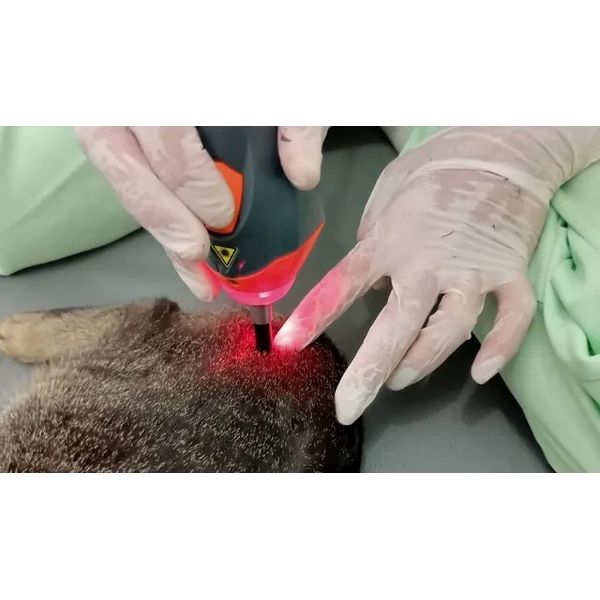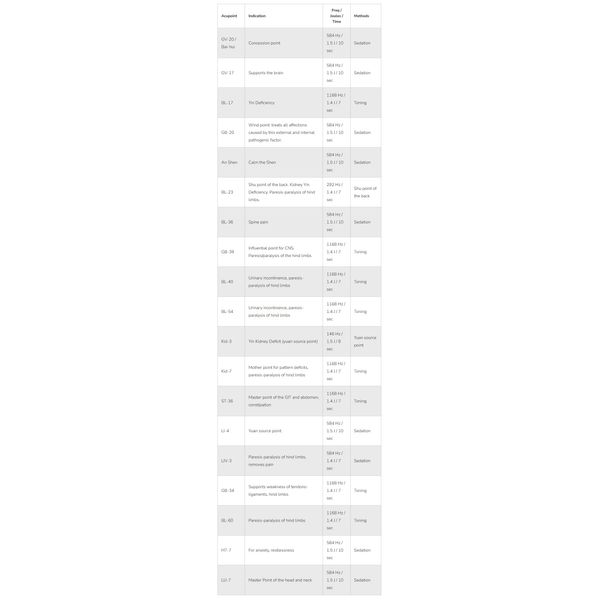

Cutting Edge Laser Technologies
- Home
- Companies
- Cutting Edge Laser Technologies
- Articles
- Moxie, Cat with Suspected Head Injury - ...
Moxie, Cat with Suspected Head Injury - Case Study
Mar. 13, 2025
Courtesy ofCutting Edge Laser Technologies
- Species: Feline
- Breed: European Shorthair
- Gender: Female
- Age: 6 years old
Most popular related searches
blood flow
pain laser
muscle tone
pain management
blood treatment
veterinary clinical
urinary continence
limb therapy
antibiotic therapy
muscle atrophy

- Suspected head and pelvic trauma resulting in ataxia, incoordination and difficulty lifting its hindquarters.
- Previously treated with traditional therapy (NSAIDs, antibiotics and painkillers) with no clear improvement
- Difficulty lifting its hindquarters, ataxia and incoordination
- Rhythmic head movements
- Altered sensorium: anxious and bad-tempered animal
- Mydriasis
- At gait it walks on tiptoe with slowed movements of the hind limbs. Able to take only a few steps alternating long pauses
- Hypomyotrophy of the hind limb muscles, especially the biceps femoris
- Intolerance with aggressive reaction to palpation of the spine and hind limbs
- Sphincter control (urinary and fecal continence); maintained appetite
- State of the sensorium: sensitive, bad-tempered, unpredictable, does not cooperate during the exam (Constitution: Wood)
- Shen: Good
- Ear: sometimes cold – hot
- Tongue: Red-wet
- Pulse: rough
- Distal ends of hind limbs: hot-sweaty
- It moves easily when touched
- Body warm to the touch
- Prefers cool places and hiding under the bed
- Kidney Qi and Yin deficiency with blood stasis
- Resolve Qi/blood stasis for a return to appropriate Qi/blood flow to reduce pain
- Tonify Kidney Yin to prevent recurring pain
- Resolve Qi/blood stasis for a return to appropriate Qi/blood flow to reduce pain
- Tonify Kidney Yin to prevent recurring pain

- Duration of treatments: 5 months (total 10 sessions)
- Treatment frequency: once a week for 5 weeks then every 15 days for 3 times, finally once a month for 2 times
2nd therapy:
- Head movements persist but are reduced
- Animal more energetic and active
- It holds its position for longer, walks several steps but on tiptoe
- Pupillary reflex present, no mydriasis
- Does not react angrily to palpation of the right hind limb
- Head movements under control
- It doesn’t fall to the ground when it shakes its head
- Initial tail wagging
- Inability to jump
- Walks independently on all 4 limbs but still “tiptoeing” especially with the right hind limb
- A marked atrophy and muscle tremor persists
- Dry and small wound
- Able to take its position independently, to walk and run slowly on all 4 limbs, a slight ataxia persists
- Hind limbs brought into the correct position whilst taking a step, capable of increasing its pace if the movement occurs along a wall
- Ability to jump onto the sofa
- Improved muscle tone
- Weight increase (from 3.05 kg to 3.65 kg)
- Still bad-tempered and uncooperative with tests and treatments
